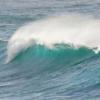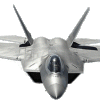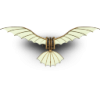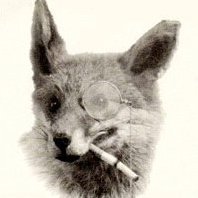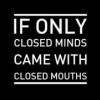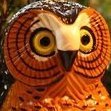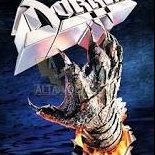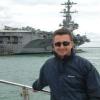Leaderboard
Popular Content
Showing content with the highest reputation on 21/02/21 in Posts
-
One i finished early January that i have only just gotten around to taking photos of. This build was out of the box, with no aftermarket additions with the exception of the FOD Covers and the 4 AIM 9L's which were taken from the Academy F4 Boxing. An enjoyable kit of my favourite subject, id definitely do another one. Decided to leave off the sharkmouth as wanted it a little different. Paints were Mr Hobby Barley Grey, FS16440 Light Gull Grey for the underside with weathering being Abteilung oils. Base was painted by me31 points
-
Hi All - finished up my latest this weekend - Tamiya's older MkV spit. In spite of it's age, it's still quite a nice kit and goes together very well. I added Eduard's cockpit details set and landing flaps. Paddy Finucane is a childhood hero of mine - a remarkable pilot and natural leader who still holds the title of the youngest wing commander in RAF history - He was a hero of the Battle of Britain and was credited with 28 aerial victories - making him possibly the highest scoring ace at that point in the war. As an Irishman myself, it's great to finally have this in the collection. As always I'm far from 100% happy with the finished model - I took a number of attempts to find and mix colours I was happy with - I used Mr Color Lacquers and I feel that their RAF colours are a little off. I think next time I'll try a different brand for these. I used HGW wet transfers for the stencils which worked like a dream - I used a Fundekals set for the scheme which were mostly fine but the main roundels were very thick and wouldn't confirm to the surface - I ended up striping these and using a spare set from an Eduard kit. I had issues with canopy - both getting to fit and then some paint got into the inside which had to cleaned off. I experimented a lot on this using oils for some heavy weathering - some of which looks good but not that happy with all of it. But it's all part of the learning experience. I was happy with the exhaust stacks which I usually make a mess of - they came out nice this time. I know alot of folks don't approve of the flaps down look on the spitfire but I wanted one example for myself - however they were alot of effort and I'm not sure they actually add a great deal to the finished model - so I doubt I'll do this again for the other spits in the stash. Overall though, I'm happy enough and she looks good on the shelf Feel free to share any feedback - Cheers - John31 points
-
Hi All, My latest completion is Tamiya's lovely Mustang III. El Mojo has been somewhat depleted of late, so I was looking for a straightforward build - I didn't bother with a WIP for this one (for the aforementioned reason). I chose to model this as GA*Q of 112 Sqn, based in Italy in 1944. Here's a photo of the aircraft: This aircraft was a little unusual in that the Sky identification band was painted out (except around the serial number), and it did not have the usual yellow leading edge stripes. Although there is much speculation around the camouflage colours for these aircraft I've chosen to model the aircraft in DG/OG over MSG. Rather curiously, Tamiya's decals provide the incorrect serial number for this aircraft (FB309, whereas any fool knows it should be FB247 🤣). Never fear, a quick firtle in the spares box yielded the appropriate digits). The kit was an absolute joy to put together - it was pretty much OOB with the exception of a lovely instrument panel from Yahu. I drilled out the ID lights on the underside of the wing and mixed appropriate paints with Krystal Kleer - I think it worked rather well. Anyway, on with the photos! Here's a lovely pair of shark mouths to warm @corsaircorp's frozen cockles (I hope you've now defrosted a bit Alain?) - one with her 112 Sqn forebear: Finally, who doesn't love a family photo? One with her kissing cousin from 3 Sqn RAAF, later also based in Italy: I've thoroughly enjoyed this build, and with mojo at much more normal levels I can gird my loins for a more challenging project. But what, you may ask??! Thanks for looking, Roger27 points
-
Hi Everyone, thia is my latest build. The Airfix 1/48 Sea Fury built as a Pakistan Air Force, Fury FB.60. Apparently the aircraft was originally delivered by Johnnie Johnson. It was built with Eduard belts, Aeroclub cowling and it suffered from the short shot tail. I riveted the aircraft and it was sprayed with Colourcoats enamels. I really enjoyed the build and despite being a massive FAA fan, decided the desert scheme was the one to go for on this aircraft. Decals are by Barracuda. Slightly annoying that Airfix didn't include a P-type compass and a gunsight but oh well. Please enjoy, comments all welcome.26 points
-
This little side project was taken on before Christmas when one of our club members suggested a Spitfire build to be finished by the New Year, needless to say that did not happen, no one finished on time. The base kit is the Tamiya Spitfire MK1 kit, being sound and good on detail and going together well. The conversion was given to me by a club member and is the now discontinued Paragon conversion which is equal to the Tamiya base kit in quality, the parts fitted superbly and the finish was silky smooth. If you want to build K5054 by way of conversion the Paragon set, if you can get one, is the way to go. Only one prototype of the Spitfire was built and mine is modelled on the way it looked prior to it's first flight on 5th March 1936. Now, one cannot talk about modelling K5054 without talking about the colour scheme, particularly prior to it's first flight, all known pics are in black and white and eyewitness accounts are few. I studied all the pics I could get hold of and while my iteration may not be to everyone's idea of what is correct it is the way I chose to go. As I said earlier the kit went together well but I did have a bit of a mare trying to get rid of the incorrect panel lines above the wing, having to sand and re-apply filler several times but we got there in the end. Two small lights were added to the wing tips and the upper wing re scribed with the panels lines running the length of the wing and not across the chord. The aerial was removed, a few little alterations to the cockpit, pitot tube on outer port wing and swapping the elevator actuator rods to the underside. Also the small air scoop in the centre of the fuselage was corrected. The Paragon set gives you the correct wheels, rudder, undercarriage doors(not fitted pre first flight), straight canopy, canopy surround front wind-shield, spinner and propellers. One very noticeable element of K5054 pre first flight are the rather battered engine cowl panels, I assume they were either unfinished or temporary items thrown on for the photographic opportunity, I have tried to replicate these, how well is down to your opinion. The other, often debated item is the colour of the oil cooler cowl. I found a picture of Spitfires on the production line in 'Wings of Fame' 3 together and not 'one' matched in colour or tone of panels in this area so I took the liberty of painting it a dark metal colour, can't remember which one....sorry! Some have suggested it may be red but I cannot see any reason for this and certainly no image to substantiate this point. Paints used were Alclad and MRP paints,the rear fuselage being in the MRP Annodised Aluminium(greenish)and both laying down well. The control surfaces were done in Tamiya grey to represent doped fabric. The decals were aftermarket items and went down well but colour saturation in places was not brilliant and the serials came in two parts, the white outer area onto which is placed the black inner serial leaving little room for error. I thoroughly enjoyed this build and I hope you like her.22 points
-
Hi Folks, Finished this in the past day or two, just need to paint up a suitable base, but wanted to share my progress. This build is the 1/48 Kinetic F-104G kit and is absolutely fantastic. Its a beautiful kit, fits really well, fairly simple and was a pleasure to build. I enjoyed it that much that id do another in a heartbeat. Thanks go out to the chaps who gave me loads of help HERE- i got some awesome advice and led to me to procure AM rocket pods which i think look ace. To all of you who helped me, thanks again! Painted with Tamiya Khaki Drab, and Tamiya RAF WW2 Grey, not quite what is called out in the instructions but photos online show loads of different shades so im very happy. Underside was AK Extreme Aluminium, White Aluminium, Polished Aluminium, Titanium and Dark Aluminium to break up the silver. All overcoated with Tamiya X22 and Tamiya Flat. Wheels are from Eduard. I know the pitot on this bird was never red and white, but i really liked it so went for it. Weathering was Flory dark dirt and grime underneath, Abteilung oils for the panels lines top side, and for adding some fading to the top panels. Decals went down great with the exception of the NO STEP on the flaps, they didnt go down so well but the photos make them look worse than they actually are. Hope you enjoy the pics. Ant22 points
-
Second one across the finishing line this year albeit it was started a fair bit before that. I always liked the look of the two seat Jaguar and built a 1/72nd scale one many years ago, but always wanted to step up a scale and build one in this scale. I managed to pick up all of the Paragon resin parts that were needed and there they sat for too many years. Then last year the moment came and off I set. If you want to know how it came together then the build thread is here: https://www.britmodeller.com/forums/index.php?/topic/235074101-airfix-148-jaguar-t2-conversion/ The Airfix GR.3 was chosen as the starting point and the following were added: Paragon Designs - Jaguar T.2 Conversion Set Paragon Designs - Jaguar Bulged Wheels Paragon Designs - Jaguar Flaps and Slats Paragon Designs - Jaguar Afterburner, Chaff Dispensers (not used) and Cannon bulges Eduard - Jaguar Cockpit Etch Set Ted Antonopoulos - Drop Tanks & Pylons Everything line and rivet was sharpened up a bit and it all went together pretty well with a bit of patience. I added lots of details on the way too but mostly underneath and out of sight now. Paint was from Hataka for the camouflage and Vallejo for details. Future was used for the shine and Xtracrylix Matt to dull it all down again at the end. I finished it in the markings of No. 6 Sqn based at Lossiemouth, which had its twists and turns as I couldn't find any decals with the data for a camouflaged Jaguar. I ended up using decals from Kits-World, Xtradecal, Microscale & Aviation Workshop to cobble together something that looks suitably close. However here she is for good and bad: As always comment and criticism welcomed Pete20 points
-
I had said I wouldn't build another helicopter until I'd replaced my cabinet but hey, visiting furniture shops at the moment is probably a no-no. I'm also getting annoyed by the album I started for this which reminds me it's there every time I launch Flickr. I can do without irritation at the moment so here goes… I bought this at one of the SMW shows because there was much excitement about the launch of the kit. Strangely I can't find a build on BM so I may be pioneering, again. Up front with arrows up… Part trees looks good. Nice detail: …but a small bit of flash on some of the smaller parts. And HOW MANY blades?? Nice clear parts and lots of PE: I'm a bit worried about the transfers. "…cut out each decal before you plenge" - bit Kenneth Williams eh? Oooer missus. But "…don't use hard or sharp tools."?? How shall I cut them out? I won't be using many of them anyway as I want to build the one in this old photo taken by my late Father-in-Law: According to helis.com, "XB252 : HC.4 Del to RAF Seletar Dec 1952. Far East Casevac Flt; 194 Sq; A&A" Oooh look, parallel blades, helpful. So, once I've worked out the instructions: I'll start this while I'm waiting for the Swift to dry.18 points
-
My latest completion, Seafire Mk III 150, No 1 Fighter Squadron, Irish Air Corps, Gormanstown 1947. Hope you like, all comments welcome.17 points
-
16 points
-
Hello my Friends. This is my latest. Uffz. Julius Handel, IV,/JG 54, Poland, August/September, 1944. I enjoyed building and painting this kit. One thing thing about the kit...The pilots seat did not fit in the cockpit very well and had to be cut down a lot to fit. All the best. Ralph.16 points
-
HI all my last one : this F5-A . the base is the beautiful Tamiya kit P-38G with the CMK resin. well....it was really difficult to adjust this resin to the fuselage but i succeed. Her are the pics : at the end : decals are from CMK but they need some microscale liquid decal film to avoid some BIG trouble. Fortunetaly i tried with the roundels before, wich i could replace easily. hope you enjoy the result.16 points
-
It's been a while since I updated this thread but that's how long it's taken me to finish the interior of this monster! I've been working on it on and off and in between other builds to be fair, but there's lots of detail painting needed and plenty to keep the builder quiet even out of the box: DSC_0038 by Thomas Probert, on Flickr DSC_0035 by Thomas Probert, on Flickr DSC_0030 by Thomas Probert, on Flickr DSC_0029 by Thomas Probert, on Flickr DSC_0028 by Thomas Probert, on Flickr DSC_0024 by Thomas Probert, on Flickr DSC_0019 by Thomas Probert, on Flickr DSC_0017 by Thomas Probert, on Flickr DSC_0015 by Thomas Probert, on Flickr DSC_0044 by Thomas Probert, on Flickr Sadly, most of it disappears when the fuselage halves are joined, but at least I know it's there! DSC_0008 by Thomas Probert, on Flickr Joining the fuselage halves will be the next job - hopefully progress will be a bit quicker from now on... Tom15 points
-
Just to be clear Daddy M. - it's not edible! #whatdomartianseat? Thanks Benedikt. I think it's always important to strive for perfection, whilst knowing full well that you'll always fall short. In my case I strive to fall short by the least amount possible within the time available. Or something: I just made that up and it sounds annoyingly New Age-y! Agitate? I never bloody stopped Alan & Bill! Actual GoPro footage from the tank's perspective... It's an entirely natural issue you both raise but - particularly as this is a double-sided job - I hovered over it the whole time jiggling the brass around in a (plastic-coated) wire cradle and sloshing the fluid around in the tank to keep it in motion so that any residue was flushed away and fresh etchant would reach the brass. More on the real culprit below.... I'm really glad to hear that Loren! Although you have to adjust some of the development / etching times etc., to whatever mix of chemicals and photoresist you're using, the book gives a really thorough overview for a novice like me! Generous of you as always Chris. Isn't it? Diane Broadbent Friedman's: - is a fascinating analysis of some of the visual psychology informing the film; not at all hard to read and a deeply rewarding book. I was lucky enough to interview the author for a project some years back and she'd pinned down the interesting fact that Arthur C.Clarke had provided advice to Michael Powell about the cosmic opening sequence of the film. Grazie Giorgio - your faith is much appreciated my friend. A night's sleep on a problem is often a good thing so after reflecting on yesterday's efforts, I did some further reading and thinking and then put the matter to one side until this morning. After spending the morning making a few adjustments to yesterday's process I done got a better hetch than the last lot: In fact that was a tad over-etched as you can see that a few sections had to be rescued from the etchant: Where I screwed-up yesterday I think was in not having the residual developer sufficiently washed away after being it exposed to UV. The penny dropped last evening re-reading Steve and Alan's thread on the matter and I realized that I hadn't used a soft brush to waft away any unexposed photoresist from the surface of the brass whilst washing it in water. I had sloshed the water around it in the tank, but clearly this isn't enough to remove enough of it and the lesson was learned the hard way - you could clearly see it washing away this time in dark wisps as you brushed over the areas concerned. I think the trick is to find that sweet spot between actually removing the unexposed photoresist from the the brass plate without being too aggressive and damaging the exposed stuff you need to remain: I was still a bit too timid with the brushing this morning - there's some little bits of brass 'coral' remaining in places where I hadn't fully washed away the unexposed photoresist, most evidently evident in areas like the rainshedding dividers for the windscreen on either side of the larger IP: Overall though I think this is nearly there, and certainly good enough to use in test fits going forward: It was only looking a that photo above that I belatedly noticed I've only done one of those lattice-y things for the wingfold mechnaism, so I'll need to go back and add a second one for the other wing into the design during the week. Other changes I introduced to the methodology this time around as well was to follow the advice ( which I'd overlooked) of many people in having the printed side of the mask in contact with the brass, plus, I was able to reduce the amount of time the brass was submerged in etchant by standing the tank in a hot water bath, bringing the etching time down by about 25-30%. If I can find enough time towards the end of the week I'll have another go at finessing the etch, but at least I've got a working version now to carry on with test assembling XN708. Frome wasn't built in a day.... Tony PS. Did you watch the Perseverance landing during the week? I must confess to being a complete geek when it comes to planetary probes and this time round had the live feed from JPL patched through onto the plasma in the living room for a family landing party: Go Percy! (NASA press conference tomorrow with - hopefully - video & audio of the descent!)14 points
-
These are the last photos of my latest model, the Ermolayev Er-2. I started this kit a long time ago, but after closing the fuselage and putting on the wings I gave up. It was left collecting dust in a corner of the shelf for about ten years. Then I finally decided to face it. It was not a much fun work, but I liked the result. BUT... Just after these few photos were taken, the board I used as background fell over the model. Now the model with its broken pieces came back to that corner of the shelf. Do you believe in fate? bad luck? curse? And the the real thing...13 points
-
I've been building the IOM Po-2 here. I made the Summer ambulance version and promised myself an RFI when I'd painted up some Zvezda Soviet ground crew to go with it. Things didn't quite go to plan, and I ended up building another Po-2 in Winter camouflage and skis. I did get the ground crew done, so here they are looking after both versions. Summer: And Winter: Thanks for looking, Adrian13 points
-
Thanks Bill I won't leave it at all! See below… Thanks Ali Thanks Adrian The putty always looks like some Monster from the Lagoon doesn't it? Weird stuff. Thanks Mark Sorry to hear you're having to wait - but we've yet to see how the vaccines will allow us to get to a 'new normal'. Strange times. Thanks Johnny Masking off. Just a few mistakes here: …which I'm not bothered about but this: …and this: … have been touched up. Now I need to wait for the paint to dry, again, and then the gloss so I've started this: Come on over!13 points
-
Hi all, calling this build done; it was a blast down memory lane, as I am sure it was for quite a few of you over 50 years. I painted the Fireflash in Tamiya LP6 Pure blue and Mr Color Super Metallic's super iron 2 with 30 drops of LP-6 to give me a bluish tinge to the silver. My plan was to mount the plane on fibre optic strands that had been epoxied into the tops of each Elevator car. 1.8mm strand was stiff enough to hold up the plane, I did not glue them into the fuselage so that I can remove the Fireflash for easy transport. I super glued the cars to the base. Overall I am delighted how this kit came out and I would like to thank everyone for their support and comments. Stay tuned for Thunderbird 2 coming soon!12 points
-
Hello, Here goes another little bird in 72nd F-5E Tiger II Adversary - VFC-13 Fighting Saints Fighter Squadron Composite (VFC-13) Saints is a US Navy fighter squadron that provides adversary training for U.S. Navy air wings at NAS Fallon, Nevada. The unit's mix of 23 F-5E, F-5F and F-5N aircraft are all painted in a variety of colorful adversary schemes of blue, gray, or brown camouflage. Fighter Squadron Composite (VFC-13) Saints is a US Navy fighter squadron that provides adversary training for U.S. Navy air wings at NAS Fallon, Nevada. The unit's mix of 23 F-5E, F-5F, and F-5N aircraft are all painted in a variety of colorful adversary schemes of blue, gray, or brown camouflage. This HobbyBoss kit was released in 2011 and it is a re-box of an old Trumpeter kit from 1999, but for only $12 Australian dollars is a real bargain!. Average to a bad fit, especially between the wings and the fuselage as well as the air intakes, but overall I'm quite pleased with the final result. As usual, painting with AK Real Colors, Tamiya Acrylics, and weathering with Abteilung 502 oil paints. Thanks for looking Reference photo: Cheers Jorge11 points
-
I was digging around in my old box of figure parts and found this one about 80% complete. I think I set him aside after he got accidentally dusted with overspray while I was airbrushing another model. The damage wasn't too bad and only took a couple blue glazes to get rid of the dusty overspray. Then it was painting his accessories and glueing them on, painting his base and boom, one more old project finished. I have plenty of reference books but no real knowledge about Napoleonic uniforms, so his kit might not be correct. Not much I can say that hasn't been said a hundred times about these kits, they are just great.11 points
-
An excellent choice T-21! Thats' exactly what I did with my Heller one (although I never did get around to finishing the base!) - my father was an airframe fitter on Hunters at Pembrey 1956-57. I also did some profile artwork for a D&V Tempest book a few years ago and made sure to inlcude a 233 OCU TT.5 in that too!11 points
-
10 points
-
One early morning shortly before Christmas, 1944, Flight Lieutenant John Sims Archer. an instructor at the Royal Australian Air Force Central Gunnery School at Cressy in Victoria, went aloft from the school field for a gun camera exercise flying a 'tropicalized' Mk.Vc Spitfire. A hoary veteran at twenty-four, 'Jack' Archer was distinguished as the one pilot of a Wirraway emergency fighter to have ever engaged with good result a Japanese 'Zero'. That had been a little more than two years before, over Buna. In the interim F/Lt J. S. Archer had survived one mid-air collision, and flown a P-40N fighter-bomber over New Guinea with 75 Squadron, RAAF. The Spitfire Mk.Vc F/Lt Archer was flying, A58-173, had also seen extensive service. In England, it had been delivered in December 1942 to the RAF serialed JG740. By then the Mk.V Spitfire had been rendered obsolescent over France by the Focke-Wulf FW190, but the type was considered more than adequate still for overseas duties. JG740 was 'tropicalized' with a Volkes filter under its cowling, painted Dark Earth and Middle Stone and Azure Blue, then turned over to the Royal Australian Air Force. Shipped off on the S.S. Austral Star, it arrived at Melbourne in mid March, 1943, and was taken into the RAAF as A58-173. When the machine went on strength of the freshly formed No. 79 Squadron, RAAF, in May, it became the favored mount of the Squadron CO, A. C. Rawlinson, who was credited with eight confirmed victories in North Africa, where he had flown with 3 Sqdn RAAF under English command. With its Volkes filter stripped off its chin, and the Middle Stone of its 'desert' scheme overpainted with Foliage Green, A58-173 (still bearing its RAF JG740 serial) was coded UP*U (in deliberate invocation of 'up yours'). S/Ldr Rawlinson flew this Spitfire Mk.Vc throughout the antipodian winter of 1943. No. 79 Sqdn operated over New Guinea and the Solomon Sea, based first at Goodenough Island, and then on Kiriwani, charged with giving high cover to RAAF P-40 fighter-bombers of 76 and 77 Sqdns, and with interception of any Japanese raiders which might be launched from Rabaul. 79 Squadron saw very little combat during this time, but A58-173 UP*U was the aircraft from which the squadron's first victory was achieved, at the end of October. It was flown on that occasion not by Rawlinson, who was being promoted to command of 73rd Wing, but by Flight Sergeant I.H. Callister, who surprised a Japanese Army Ki-61 'Swallow' fighter, and shot it down. . In March of 1944, No. 79 Sqdn was committed to the Admiralty Islands campaign. From airstrips on newly-captured Los Negros Island, the squadron provided close support to troops on the main island of Manus, and escorted shipping in the Bismark Sea. No. 79's aging Spitfires proved difficult to maintain on an advanced base, and by May the unit was reduced to a skeleton, with only two operational machines, and a dozen needing repair. A58-173 was among the latter, and in mid June it arrived at 1st Aircraft Depot near Melbourne for a thorough overhaul. A58-173 emerged from the workshops in early September, with its Volkes filter restored and stripped of all camouflage paint, and was assigned to the Central Gunnery School at Cressy. Flight Lieutentant 'Jack' Archer's gun camera exercise on December 21, 1944, was to be the final flight of A58-173. The coolant system for the the Merlin motor sprang a leak, and the engine seized up. F/Lt Archer was forced to land, which he managed with little damage to the machine, near South East Meredith Railway Station. A recovery party was dispatched from the airfield at Cressy, and the aeroplane was got onto a trailer. Motoring back to the airfield, this was rear-ended by a civilian vehicle. Great damage was done to the tail of the machine, and A58-173 was written off as past repair owing to a traffic accident. Probably not a completely unique occurance, but certainly not one encountered often in the records.... This model of A58-173 was built from the old Heller 1/72 kit, in a very old Smer boxing. I made no effort to detail or 'improve' the kit, beyond replacing raised panel lines with scribed ones. I doubt many of these are still being built, but as can be expected from an old Heller offering, the kit is well designed, and fits well (with the exception of the optional Volkes filter under the nose). I did not like the three-piece canopy (hard to test-fit together), but they did all fit one another cleanly. The rearmost piece rides a hair high, and so does not quite properly 'blend' with the fuselage spine. The kit's wingtips are separate pieces, so it can be built with either full wingtips or 'clipped' ones. This would be no problem in a full wing model with a painted finish, but these seams did complicate foiling a bit, because burnishing down the foil could easily crack them. I am of the 'nothing looks quite so like metal as metal' school, and so always use foil for a bare metal finish. I make my own from kitchen foil, boiled a while with eggshells, and tacked down with MicroScale foil adhesive. I decided to build this kit, which I'd had a long time, soon after doing an old-tool Airfix Mk. I Spitfire. ( https://www.britmodeller.com/forums/index.php?/topic/235077256-spitfire-mkia-609-squadron-september-1940/&tab=comments#comment-3766657 ) When I went looking for Mk. V subjects, I was hoping to find something a bit unusual. An image of a natural metal Spitfire seemed just the thing, and led me to the ADF Serials site. They have something on just about every individual machine, and it caught my eye there was more text than usual in the entry the bare-metal A58-173 illustrated. I toyed with the idea of doing the machine in its New Guinea employment, where it was also well-photographed, but decided to stick with my original resolve to do a natural metal Spitfire. The fuselage roundels are leftovers from an Academy P40N kit, the rest are improvised with a smaller 'A' roundel (of the 'place yer own damn dot' sort) put down over a larger one, to match a 'B' roundel proportions. Some measuring was necessary, and so was some painting over unexpected tranluscence where the larger roundel had a a red center. Wife made the serial numbers and the identity letter from the school. It is rather an odd 'E', and it took some improvising to match the side-view photograph taken of A58-173 shortly after 'Jack' Archer's forced landing.10 points
-
This is my interpretation of the paint scheme from the kit, a quick disclaimer, maybe i could Have got the green splodges a bit smaller, I'll have a go at that on the shurzen armour, i gave it a filter to try and blend it together a bit, A fair representation or not? This is the scheme I've attempted Thanks all, i await your verdict10 points
-
Thanks Chris, I've got a set of the Kits World seatbelts for the CR.42 but I see that ICM are bringing out a set with a seated Regia Aeronautica pilot so I might just put a little guy in there and see how it goes when I do get round to it. A couple of bits needed to be done before closing the fuselage: fitting the tailwheel (I opted just to fit the fork and add the tyre later for ease of painting): ... and two clear parts; the fuselage spine light and another clear part which from its position I think must be the glass insulator for the R/T wire: Both lovely little details but will be a bit of a pain to mask While I had the clear parts sprue to hand I applied the Eduard masks to the canopy sections: Then I joined the fuselage halves together. There's a bit of 'flex' and care is needed to make sure it's lined up front and back, I was a little less careful than I might have been but it should all come out right in the end: ... then the underside inserts for the Gladiator and the Sea Gladiator were fitted: They fit well, but will need a little bit of tidying up to blend in. So far I have managed not to fit any of the wrong parts to the wrong kits; plenty of time yet, but so far so good Cheers, Stew10 points
-
The Hafner Rotachute was designed by Austrian Raoul Hafner who moved to the UK in the early 30's to carry out his research into flying machines, generally rotacraft. The idea of the Rotachute was to deliver a single soldier into battle with a weapon as at the time silk for parachutes was in poor supply. The Mk1 started fly trials in 1942 on the back of a lorry, this is the version I have chosen although pictures of this version seem a little scarce. However, these trials showed that the short, stubby tail was inadequate resulting in the MK1 crashing. The design went through several iterations and was found to be practicable but the requirement faded away. Flights were carried out by being towed behind a Tiger Moth on a 300ft line followed by a controlled landing. This was not the end though, further flights were made to assist and gather data for the next project, the Rotabuggy, basically a Jeep with a tail towed in a similar way. And yes, it did fly.....in the end, the firsts flights not being good for the test pilot. Raoul Haffner had plans to go even bigger with the Rotatank, with a similar tail unit to the Rotabubby but bigger. To the best of my knowledge this remained a paper project, probably for the best! Even at 1/32 this is a small kit of few parts although you do get a resin Bren Gun and some PE, although all of it was not used on the MK1. Assembly is fiddly and needs a little forethought to make assembly straightforward. If I get around to it I may add a soldier come pilot at a later date. Thanks for looking.9 points
-
Hi giys i posted this late in the build wirh WIP but i have pretty much only the weapoms left to make so the Flanker itself is finished. It's been tedious but definitely worth it. I just didn't enjoy the build much but that's irrelevant so here it is. I used Begemot 1/48 SU-27 decals and this is markings for either a Soviet era Flanker or a Flanker from the 1990s I forgot which. The infared sensor which is moved to the side on the SU-35 was a hollow piece of clear plastic and in photos you can see the sensor inside so I used white plastic card and super glued tinfoil to it and painted clear green to give a similar effect it's a big enough scale I thought this would be worthwhile in the photos here it may not be obvious but in reality it makes a difference, the paint is the pre mixed flanker colours from Mig they said they're specific to the SU-35 and Alclad 2 and AK Extreme metal and Tamiya clear colours for heat staining were used. All comments and criticisms are welcome I've learned a lot watching other build a here this is my first completed model in 2021 and my first model completed since the A-10 I made as a gift. Enjoy the photos!9 points
-
Thanks, Nick; that helps a lot - I am now trying to fettle a suitable piece of runner into something similar. Meanwhile, here’s the rack (dry fitted; far too vulnerable position for glue just yet!) As you can see, this area yet to be cleaned up! More soon Crisp P.S. I have the long range tank from a 1/72 Airfix Swordfish - alas, much too big for this; but a plausible pattern.8 points
-
Been working on the mast cheeks which support the shrouds and of course I couldn't resist jury rigging the mizzen As you can see the jewelry fitted to boom and outrigger Experiment with shroud lashing. Left cord, right thread. Think I'm going with the thread. Thank you all for the comments and likes Stay safe Kev8 points
-
We've had the first glimpses of spring down here in Kent today so I've given the DC-8 a splash of primer: DSC_0004 by Thomas Probert, on Flickr DSC_0002 by Thomas Probert, on Flickr DSC_0006 by Thomas Probert, on Flickr There's a few minor blemishes to address, but overall it's come out ok! If the weather continues to warm, I may be able to start in the main colours... Tom8 points
-
Some builds are pure joy from start to finish and that about sums up this one! Painted with MRP paints and added PE seat belts and Aero Master decals. Nice addition to my flock of 109s (and its variants). Rich7 points
-
This is my interpretation of the venerable Matchbox Hawker Fury Mk.1 courtesy of the Revell reboxing in the wonderfully bright, eye-catching livery of No.43 Squadron based at RAF Tangmere 1932. I originally intended this to be a gentle excursion and break from my Dambuster build as a contribution to the Made in Great Britain GB. Sadly, and shamefully, I ran out of time and failed to make the finish, but reincarnated it in the WIP section. Build thread is here: http://www.britmodeller.com/forums/index.php?/topic/235027219-revell-matchbox-hawker-fury-mki-172/& I believe it is Matchbox’s first kit way way back circa 1972: https://www.scalemates.com/kits/147812-matchbox-pk-1-hawker-fury The kit itself is a lovely little kit which goes together very well. Even after all these years, apart from some flash here and there, the tooling holds up quite well. It is also quite accurate with the exception of the tailfin which is a little undersize, and the undercarriage which is a tad high because it is moulded in the inflight position. That said these really are subtle nuances which are barely noticeable. Of course it has raised panel lines, the rivets are a bit OTT, as is the wing ribbing. The undercarriage is a little clumsy and toy-townish looking, but after all it is a kit from 1972. There aint much else on offer in 1/72, save the old Airfix kit and the Amodel Mk.1/2. I understand there is an MPM Production future kit in the pipeline. You’re not exactly spoilt for choice in respect of aftermarket – you can get an IP panel and some undercarriage conversions for the Spanish version, although there are plenty of decals for those tasty schemes to choose from. As for my build, well as I said above it started as a gentle OOB build, but I started adding details and ended up getting carried away, with the result that it was a proper kit bash in the end with quite a bit of scratch added and parts replaced. I sanded back the raised panel lines and re-scribed new ones. I pretty much rebuilt the entire cockpit interior, scratch building a new seat, cockpit frame, IP, gun mount, joystick, harness from take-away container foil, and other bits and bobs. The pit is pretty much Spartan as you can imagine with an early 70’s kit. You can’t see an awful lot of it, but as is the usual parlance “I know it’s there”. I trod on the windscreen and bust it so had no choice to make a new one from acetate with frames made from take-away foil. The guns were moulded on, so I cut and sanded them away and scratch built replacements from Albion Alloys tubing. Ditto the gunsight which was a bit oversize and clunky. I scratch built cross hairs and the pilot bead – quite fiddly but nice little touches I feel. I sanded back and cut out the exhausts which were moulded on. I replaced these with small sections of brass tubing, slightly squashed to replicate the oval shape. These were finished off in Humbrol Metalcote gunmetal. I left the rivets on the engine housing as I liked the effect, albeit they are a tad over scale. This was then covered in Bare Metal Foil to replicate the polished aluminium effect. The rest was finished off in Humbrol polished aluminium metalcote and HU 24 trainer yellow. The prop and wheels were finished in Tamiya NATO Black to give an off black effect. The wing ribbing was sanded back to give a more subtle effect, and I added the little actuators and counter weights. I used a little of the undercarriage but largely replaced it from flattened tube. Ditto the tail struts. I modified the wheels, spinner, tail, scratched a new tailskid and modified the radiator with little bits of mesh and a scratch built an oil cooler. The latter can barely be seen but “I know it’s there”. Made a pitot and venturi. The rigging is invisible thread. Phew! Anyroad it’s a great kit and an enjoyable build. You can build it straight OOB on a rainy Saturday afternoon like we did as kids, or go nuts like I did. Either road you’ll have fun. Thanks for looking.7 points
-
On a bit of a roll with submarines. Here is my attempt at the Bronco Models 1:350 kit of the USS Seawolf SSN-21. Very simple to build, but made a bit challenging with a very hard black plastic. The decal placement diagram was also pretty much useless. Terrible stand as well, which I will need to do something about. That being said, ended up ok as a relaxing build. Brush painted with Tamiya and Italeri acrylics and photographed in the very non-maritime environment of my backyard. Thanks for looking.7 points
-
Ced, I think A is first, followed by B, then C, which should all be done before D though I shall defer to the more knowledgeable and skilful members of this parish. If you know your alphabet , it shouldn't be too difficult though if you end up using your fingers, that's counting, not alphabet - they're different! glad to have been of assistance.7 points
-
Saturday was a VERY BUSY day - I got my vaccine shot - but I also got loads done on the Schwimmwagen. My shot wasn't until 2:30pm - but I was up early - in anticipation of the big day - so I got to work on some of the big jobs. I got the tyres / internal tub / outer chassis all painted... As you can see I've gone for SCC15 - as I'm guessing the boys of the Hussars gave her a complete paint job.7 points
-
Progress continues - blending in the wing/fuse join. Adding lumps and bumps. The latest milestone has been fitting the main undercarriage - heavily spatted, heavily engineered in 1:1 . And then the big test - will it be a tailsitter?? There's a LOT of plastic behind the pivot point..... Ha! Yes! There's no shortage of space to put lead in the nose - so have not skimped. The flaps/Ailerons have been scratched - but are not shown here. Next step - getting to the point where I'm going to mask off the canopy - that'll be a significant step in making it look like the real thing. And plenty more detail to be added - struts, hopper detail, engine vents etc.7 points
-
I've also read that Woolworth's funded some early Airfix kits in exchange for those exclusive rights. When I was a kid I was home sick from school for a few days with chicken pox and very bored with nothing to do. I had read every book in the house, so I asked my dad to buy me some aviation magazines and bring them to me when he came home from work so I would have something to read. He did, and among them was a magazine I had never heard of, much less seen before: R.A.F. Flying Review. Wow! What an eye-opener! Not only did it have photos and stories of aircraft I had never heard of (Jet Provost, Gannett, Blackburn N.A.39, Fairey Rotodyne), but also advertisements for products I had never heard of (like three-wheel autos – how quaint!), including constant-scale model kits from companies such as Airfix, Frog, and Eagle. How cool! These were the models for me! According to the Airfix ad, their kits were available at the local Woolworth's. But this was in Freeport, Texas, a small town on the Gulf coast, October 1958, and there was no Woolworth's, although there was a Neisner's. I still wonder why the local newsstand there was selling R.A.F. Flying Review. The only explanation I can think of is that Freeport had a small deep-water harbor, and the occasional British freighter came into port. I know we gave a lift one day to a couple of just-arrived British seamen who needed a ride to town. Maybe the newsstand owner was a British ex-pat. The next year (1959), on our annual summer vacation, my mom, dad, sister, and I went to visit relatives and Disneyland in California, driving all the way there and back in the days before Interstate highways (motorways); there is absolutely no truth to the rumor that National Lampoon's Vacation was based on that trip, although it possibly could have been! In a store on Disneyland's Main Street I discovered shelves piled high with Frog kits. I was in heaven! But I wound up with a Revell F-27 because my aunt, who accompanied us to Disneyland that day, offered to buy me a model, and thought the F-27 was better because it was "American." In 1961 we moved to Wichita Falls, Texas, and I learned there was a Woolworth's downtown. As soon as I possibly could, I persuaded my mother to take me shopping so I could visit the local Woolworth's in search of those Airfix kits I had seen in R.A.F. Flying Review. Imagine my disappointment when I discovered that not only were there no Airfix kits at the local Woolworth's, but that the Woolworth's employees had never heard of them, in spite of my showing them the magazine ad! I was not happy. It was suggested that I contact the US headquarters of Woolworth's for an explanation. When I got back home, I wrote a letter to the address provided by the store manager, and in a few days I had a response, in the form of an official-looking letter, signed by a Woolworth's vice-president, informing me that, yes, Woolworth's in Great Britain was part of the same company as the US stores, but sold different products to their customers. As a consolation, a $5 gift certificate was included, which I used to buy Revell, Monogram, and Hawk kits. But, in a small, out-of-the-way hobby shop there, I found stacks of Frog kits! (Why would a hobby shop in North Texas have Frog kits? No idea, even today.) I bought and built the Hunter, Meteor, Fairey Delta, and Short Sealand, and they formed the nucleus of a 1/72 scale kit collection which gradually grew over the years to include Airfix, of course, and Revell's 1/72 releases. The first Airfix kits I remember building were the Jet Provost, Auster Antarctic, and Saunders Roe S.R. 53. The neat thing about building "foreign" kits, besides their exotic nature, was the fact that none of my boyhood friends had ever heard of the aircraft they depicted, so I could impress them with my "foreign intelligence." They were all building purple, yellow, and red Aurora 'Famous Fighters'! A year later I met a high school classmate interested in ships, and he and and I became best friends. We mail-ordered (from a UK vendor advertising in R.A.F. Flying Review; Arthur Mullet Ltd., if memory serves.) some Airfix kits, some of the Eagle 1/1200 ship kits, and some Humbrol enamels with which to paint our model ships and planes, and fought many a horrific naval battle on the floors of our rooms. That was also my first experience dealing with International Money Orders. I still have a few of those Humbrol tins, and the paint is as good today as it was back then! Over the years I probably purchased at least one example of every Airfix and Frog plastic kit ever made,and more copies of R.A.F. Flying Review and its successors. They are mostly gone now, but that chance encounter with a copy of an obscure (to me, at least) British magazine sparked an interest in British aviation and model kits that has remained with me to this day.7 points
-
Good evening, Thank you so much Mates! Well there we are ... It is over. I can call this one done. The two windshields are in place, riveted. The mirrors are painted, polished and installed using a bracket placed from inside the tub. I varnished the rear scoops and fitted them with the Dzus. As expected, only the right one is in place. The photos in daylight will certainly give another aspect to the model: we will see tomorrow. A small photo with some friends taken from their box for the occasion. A small comparison between the 3L H16 BRM and the supercharged 8 in line 2.3 liter has Bugatti. Let's concentrate on the next one. Pascal7 points
-
Hasegawa 1/72 Kawanishi N1K2-J Shidenkai 343rd Naval Kokutai 301st Fighter Hikotai First Lieuenant Kanno Tokushima7 points
-
Greetings all, This rather large box somehow appeared on my doorstep this week - how these things happen I shall never understand... I love the 8th Air Force and the B-17 and B-24 in particular, so decided to have a go at the recent HobbyBoss release of the B-24, or the 'crate the B-17 was delivered in' if you spoke a B-17 crew. Not very fair really, especially when you consider it could fly farther, faster and with a greater bombload than the Fort. The kit looks fairly simple in places as has been discussed at length elsewhere, but that's just what I'm after at the moment - something nice and straightforward but with an imposing end product. We shall see... Customary box shots: IMG_0197 by Thomas Probert, on Flickr IMG_0199 by Thomas Probert, on Flickr And progress so far... I thought I'd ignore the instructions and start with the main undercarriage bays. First up was a spraying of aluminium and a grey Flory wash to bring out some of the lovely detailing: IMG_0195 by Thomas Probert, on Flickr Following by it all slotting together rather nicely into a very sturdy box-structure: IMG_0200 by Thomas Probert, on Flickr IMG_0201 by Thomas Probert, on Flickr All that only took a couple of hours in total - lovely! Take care all, Tom6 points
-
Hopefully this model is allowed here.. it really doesn't fit anywhere else. Ok here's my take on an old box 1/10 Revell Allison Turboprop model, box art is as follows; I found it funny that Revell chose to put a C-130 on the cover; it was probably a marketing strategy to sell more kits because of the cool factor associated with the Herc. However, if you build it as-per the instructions, you end up with a model that's no-where near the resemblance of a Herc engine. That's because the model is actually a very early generation of the T56/501 engine lineage (T56-A-1 or 501-D13) which was found in the Lockheed L-188 Electra. So, if you want to build a P-3 Orion/CP-140 Aurora engine; build it as-per with light modifications. Whereas if you want to build a fairly recent C-130E/H running a T56-A-15; you've got a LOT of work ahead of you. I picked up the kit pre-owned from the local hobby store, and just from years of sitting on someones shelf or being handled; 95% of the parts broke away from their sprue. 😒 Imagine the look on my face opening up the box and seeing a limp bag of 205 VERY similarly looking parts sitting in a heap. As you probably know, instructions were a guessing game in the 90's with crudely drawn sketches that are almost impossible to understand (I hear Atlantis has addressed this issue), and to cap it off the one of the driveshafts going from the front frame to the gearbox was missing. New plan.. replace three-piece plastic driveshaft with a one-piece metal driveshaft. Then.. the modifications started snowballing from there. Modifications I completed (prop to exhaust). 1. Gearbox a. drilled mounting nacelle mounting points. b. flipped gearbox c. metal thru shafts for spur gears d. metal hinge pin on access door (common to break in factory form) 2. Front frame a. relocated gearbox support strut mounts on front frame b. added pressure sensor port in 9 o'clock inlet guide vane c. relocated PLC feedback linkage-arm-hinge to account for flipped gearbox 3. Compressor case a. drilled compressor spool core to account for new driveshaft b. created the new compressor-air bypass ducts c. created most of the air line plumbing using either stretched sprue or .020" safety wire 4. Mid-frame (diverter) a. redesigned QCU airframe mounting flange b. added 1 & 11 o'clock customer bleed air ducts 5. Combustor case/access door a. ran two ignitor leads to proper boroscope port (kit had location wrong) b. drilled dilution holes in combustion cans c. created Turbine inlet temperature sensor loop 6. Rear mount a. made exhaust cone able to rotate engine driveshaft instead of using thumbwheel for a more scale appearance. 7. Accessories a. created a new stand to support the new configuration of the model. *if I messed up with my terminology regarding T56 turboprops, please feel free to correct me. I'd rather have a correct post, than an incorrect one. My background is F404 engines (F/A-18 Hornets), so I may be incorrect with some Hercules stuff.* Because not everyone has experience around turbine engines.. here's a pictogram of the locations I modified according to the previous list. And, the rest of the pictures...6 points
-
A beast hard to tame,but enough fun after all...hope you like it,even being not a top build...6 points
-
YES! It's over! After 18 months Veltro is finished. I don't know what is worst - 21st CT or PCM...But well, I didn't threw in out of window Hope you'll like it.. Airfield base will be done in next few days... So...what was done to this Veltro: -upgraded cockpit (scratch) -downgrade from serie III to serie I (removing cannons for MGs) -new gear covers -details in gear wells -metal Pitot's tube (home turned brass tube) -position lights -some intakes drilled -new gunsight -weld mark on exhausts -sealing screw holes -AM wheels (thanks AlexM) -custom RAAF markings based on Squadron Signal Walkaround book (there is a photo of RAAF captured Veltro) -some minor details, antennas etc. Girl is from Master Box Pin Up series, puppy from Tamiya Live Stock set. Bucket is scratchbuild, brush is from... old brush Model was painted with Mr.Hobby. AK Real Colors, Vallejo and Tamiya range. Weathering is mainly Ammo Mig.6 points
-
I am a brush and rattle-can painter, and although I have improved over the years, I have never produced a particularly realistic finish. Having seen a series of excellent finishes from someone on BM, I thought I'd try pastels. So, out came the AMT Ju 88C nightfighter which I built as an experiment. So, here's the result: What d'you think? Rgds Martin6 points
-
Your anchor is a pure fluke and you've got a nice rack. I don't say that to every sailor you know...6 points
-
Continuation, I wasn't sure how many images a single post can contain. I should have added that the model is ~25 inches long by 5 inches across the beam Here is the backs hull framing all in place. Note the small stringers between the main frame, not sure the model needs them but they were full scale practice. The transvers beams are removed later The next picture I have shows the motor and prop tube mounted The propshaft runs at a very shallow angle and has a single outer plate support. The prop is a high-speed prop, in brass, I have no clue where I got is but its right for the boat Here is is mounted to the boat, note countersunk screw holes holding the plate in place, I was fussy all those years ago .. I believe those are cap nuts, what was I thinking? The steering wheel and rudder were scratch made from brass, shown here painted Here is the dash panel in place and the steering wheel mounted. I think at the time I ntended the steering wheel to move with the rudder servo, at least I gave that bit up.... The seat is the battery box, works the CofG well Last picture for today, the arrangement of the RC controls and wiring. The hull has been coated with a 2 part epoxy paint inside and out to waterproof everything and here the inside has had it green final colour coat. The lower hull has also been planked in 0.5mm walnut strip Upper works and RFI pictures tomorrow, very short thread, hopefully of some interest Cheers Steve6 points
-
Hello all Have a nice Sunday and thank you for the friendly comments 🙂 🤝 Today it's about more details on the IG, the vignette and the construction of the magic metal tracks. For all those who work with burnisher and are interested I have posted my medium. As the comparison shows, you can save a lot of money with the same result. You can find it in the Tiffany hobby shop. It is important that it is for tin, brass and copper, because burnisher is also available for steel and this does not work for model tracks. It should be clear that the parts have to be clean and free of grease, and any residues of super glue have to be removed beforehand, but you can also use the rebonder for this. I don't know the result with resin bolts like the ones from MC, so it's better to test beforehand 🧐 Have fun! MD some boltheads w. punch and die set Holes for the hooks added, after that i use a PE saw to remove them from the sprue Wiring for the antenna I used a plastic wire instead of metal and closed the ends of the hinges with a hot blade of a hobby knife This way you don't need superglue and everything is still movableI here you can see glue remains Hocus-pocus-simsalabim 🧙♂️ 🐸 🦎 🍄 clean 😎 enough track links for both sides 👍 plug together and carefully bend over the clips do not press too hard, then everything remains movable also fits well on the Dragon drive sprocket 😅 one side is done in 10min 👍 a comparison can save money 🤑 as you can see, the same effect The longer you leave it on, the darker the tracks become (the light spots are remnants of CA glue) the rail is embedded in the paving stones and the wooden frame also fits the track is on the wrong side, but I only checked the layout 🧐 🤓 See you!6 points
-
Well after a few hours today it’s done.....sort of. Pod isn’t attached yet -going to look into what @Ben Brown suggested. Might polish up the engine bells a bit and “might” put a wash over the fuel tanks and spine of the pod. all in all a thoroughly enjoyable build and big thanks to my good chum @BIG X for the birthday present! 👍 have just noticed that I’ve fitted the outer facing part on one of the side pods upside down.....😬 Oh well too late to do anything about it now.... so, do I start saving my pocket money for the 22” one?......6 points
-
A little bit of progress. I have applied some chipping effects to the green paint. The base colour would have received a couple of coats and should be fairly durable but as far as I'm aware the disruptive colour would only have one coat of paint so some wear would be inevitable. I didn't want to go over board with it though and tried to keep it in arears that would have received the most wear such as the bottom of the sand shields and areas that I thought crew and soldiers would tread. Looking at the photo of my subject its difficult to tell how worn the paint work was. I wet the area I wanted to work on to reactivate the hair spray and then worked at getting the paint to chip with a sharpened cocktail stick, an old cut down brush and a fine sanding sponge. I also used a needle for fine scratches. After a little tidying up of the paint work I sprayed a fine mist coat of the pink base colour over the whole model to take down the contrast between the colours. It helps to blend the camouflage and also gives a slightly dusty appearance which helps with the weathering. I also made a start on painting some of the details. I then put on the decals however the WD numbers were somewhat smaller than the one that you can see in the photo of Buccaneer, so I used my vinyl cutting machine to make a stencil. I prefer to use a stencil and paint markings where possible, that way there is no risk of silvering. I took a chance that the painters would have used the same stencils to put on the rear WD number. I'm not sure though if the number was also applied to the left hand side of the turret. The flimsy cans were painted Light Stone just to give a bit of contrast. Following some advice from Mike Starmer that the tank in the photo showing the left side had been retouched I decided to alter the disruptive pattern on the model to match the official October 1942 pattern for Valentines. Next up I will start to apply washes and a clear coat before I make a start on weathering. Wayne6 points
-
Thanks, I'm looking forward to it too. Slave 1 is always a fun subject to paint. I've got most of the cockpit painted now. It's difficult to ascertain the exact shade used on the S1 cockpit sets used on Mando, but it's essentially a dirty grey. I gave all the parts a medium grey base coat using Gunze Medium Sea Grey with a little black mixed in. I then used some straight MSG to spray some loose highlights. I added a dollop of black to the remaining paint to get a dark grey, thinned it quite heavily, and sprayed a few shadows in the recesses and along the panels lines. The rest of the painting was then done by brush, mainly using thin glazes of different greys to differentiate the panels. The circle of raised panels behind the fligh deck were painted in a warm tan grey, and a few details were picked out in yellow to tie in with the collars I added to the seats. The seats themselves were painted in a cool tone green with silver for the frames. Everything then had a dark grey acrylic glaze slathered on, then partially wiped off to weather the finish. The last step was to add some chipping using a pale grey applied with a sponge, and finally a few tiny chips and worn edges done with a pencil. I've also added the little photo etched doo dahs and they make a nice detail and catch the light a bit, although probably won't after the cockpit is installed in the fuselage. Just waiting for the glazes to fully dry, then I can get it all together and move on to the rest of the build. Andy6 points
This leaderboard is set to London/GMT+01:00

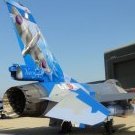





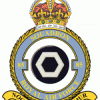
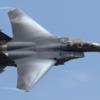




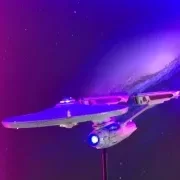
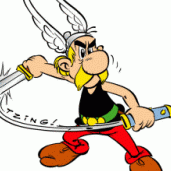

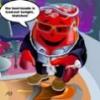

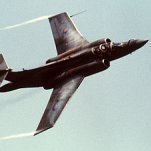

.thumb.jpg.a15df237fd8d56e4265c64c5f8f26d75.jpg)

